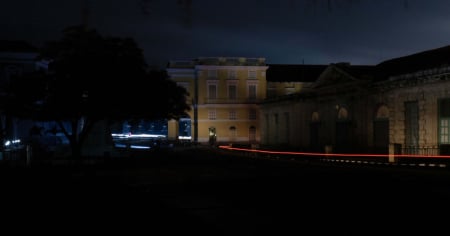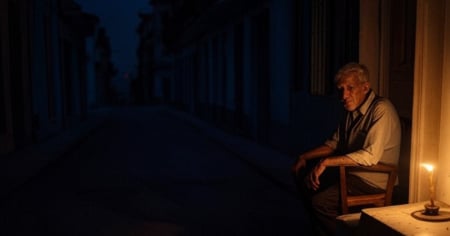
Related videos:
Cubans continue to endure each day without electricity and without hope of having it. The forecasted deficit of more than 1,600 MW for this Wednesday will leave a large part of the country, especially the central and eastern regions, in darkness.
On Tuesday, the service was disrupted for 24 hours, and this continued throughout the early morning today. The highest impact was 1,748 MW at 7:10 pm, coinciding with peak consumption time, and greater than what was planned due to higher-than-expected demand.
According to the report from Unión Eléctrica, this Wednesday at 7:00 am, the National Electroenergetic System (SEN) was experiencing an impact of 667 MW, with the highest incidence in the central-eastern region. By noon, it is estimated that the figure will reach 1,100 MW, with equal emphasis on the same region.
For its part, the capital continues to be favored, despite also experiencing power outages, though less so than the other provinces.
The Electric Company of Havana announced for today that due to a generation deficit, it is necessary to affect customers associated with blocks 3 and 4 from 10:00 am to 3:00 pm.
From then on, Block 1 will be affected until 7:00 PM. Meanwhile, from 6:00 PM to 8:00 PM, Block 2 will be affected.
In addition to the deficit, there are a total of eight thermoelectric units in the country out of service due to breakdowns or maintenance that complicate the situation.
The blocks are out of service: block 3 of the CTE Renté, block 3 of the CTE Santa Cruz, and blocks 1 and 2 of the CTE Felton.
Maintenance is currently ongoing for blocks 2 of the CTE Santa Cruz, blocks 3 and 4 of the CTE Cienfuegos, and block 5 of the CTE Renté.
Other incidents affecting the service are thermal limitations, which have left 360 MW offline.
Additionally, due to a lack of fuel, 76 distributed generation plants are out of operation, including 68 MW at the Mariel fuel plant and 54 MW at the Patana de Regla, totaling 658 MW affected by this issue.
For peak hours, a recovery of 80 MW is expected from distributed generation engines that are currently offline due to fuel issues, along with the introduction of Unit 3 of the Renté Power Plant with 65 MW.
With this forecast, a capacity of 1,629 MW is estimated, and a maximum demand of 3,200 MW, which would result in a deficit of 1,571 MW. If these conditions persist, the impact could reach 1,641 MW, with a greater incidence in the central-eastern region, as has been the case in previous hours.
Frequently Asked Questions about the Energy Crisis in Cuba
What is the current electricity generation deficit in Cuba?
The current electricity generation deficit in Cuba exceeds 1,700 MW, severely impacting the energy supply during peak hours. This is due to the lack of capacity to meet national demand, which far exceeds the available generation capacity.
What are the main causes of power outages in Cuba?
The blackouts in Cuba are primarily caused by the shutdown of several thermal power units due to breakdowns and maintenance, as well as by the lack of fuel affecting distributed generation plants. These limitations hinder the adequate coverage of the country's electrical demand.
How are blackouts affecting the daily life of Cubans?
Blackouts significantly impact the daily lives of Cubans, making essential activities such as food preparation and the use of appliances more difficult. Additionally, they generate frustration and social discontent, affecting the overall quality of life for the population.
What measures has the Cuban government taken in response to the energy crisis?
So far, the measures implemented by the Cuban government have been insufficient to resolve the energy crisis. Effective long-term solutions have not been established, and the population continues to suffer the effects of blackouts, leading to increasing discontent and protests in various regions.
Filed under:





